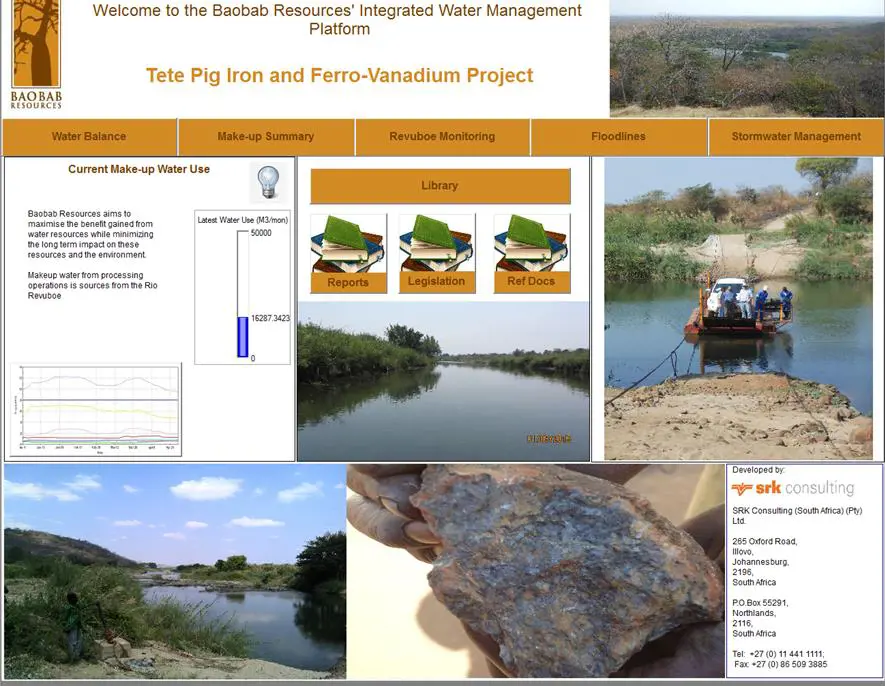Samples of interactive dashboards which provide near real time feedback to the client on water supply and availability and allow for testing of operational decisions.
SRK conducted the water management aspects of a Feasibility Study for the Tete Pig Iron and FerroVanadium Project in Mozambique. The project is located in the north of Mozambique, approximately 40km north east of the town of Tete, in the Tete province, one of the region’s fastest growing mining and industrial centers.
Water supply and management were the client’s key concerns as the area is characterised by a long, dry winter and a short but extremely wet summer. The site is located on the eastern bank of the Rio Revuboe, one of the last major tributaries, which flows into the Zambezi River before it reaches the Indian Ocean. Other mining projects are planned for further down river, presenting competition for water resources. The client recognised the need for a proactive water management strategy and the value of a decision support tool to help make informed decisions about the impacts of operation decisions on water demand and availability.
The author, Lauren Bulcock, formerly with SRK, developed an integrated water management dashboard, which is used for planning and presenting water data, using Goldsim software.
The dashboard incorporates stormwater information, floodline information and, more importantly, a dynamic water balance which allows the user to test water intervention or environmental scenarios that can impact water demand and availability. This allows the client to model the implementation of strategies and make decisions instantly, to prevent interruptions to operations due to water constraints. These intervention strategies include slurry densities, scenarios of increased or decreased production and water routing options, while the environmental scenarios include different rainfall and evaporation scenarios.
This dashboard was well received by both the environmental agencies and authorities as well as financial advisors who were assisting with the bankable feasibility study and mentioned the increasing emphasis being placed on the availability of water for future investment projects.

